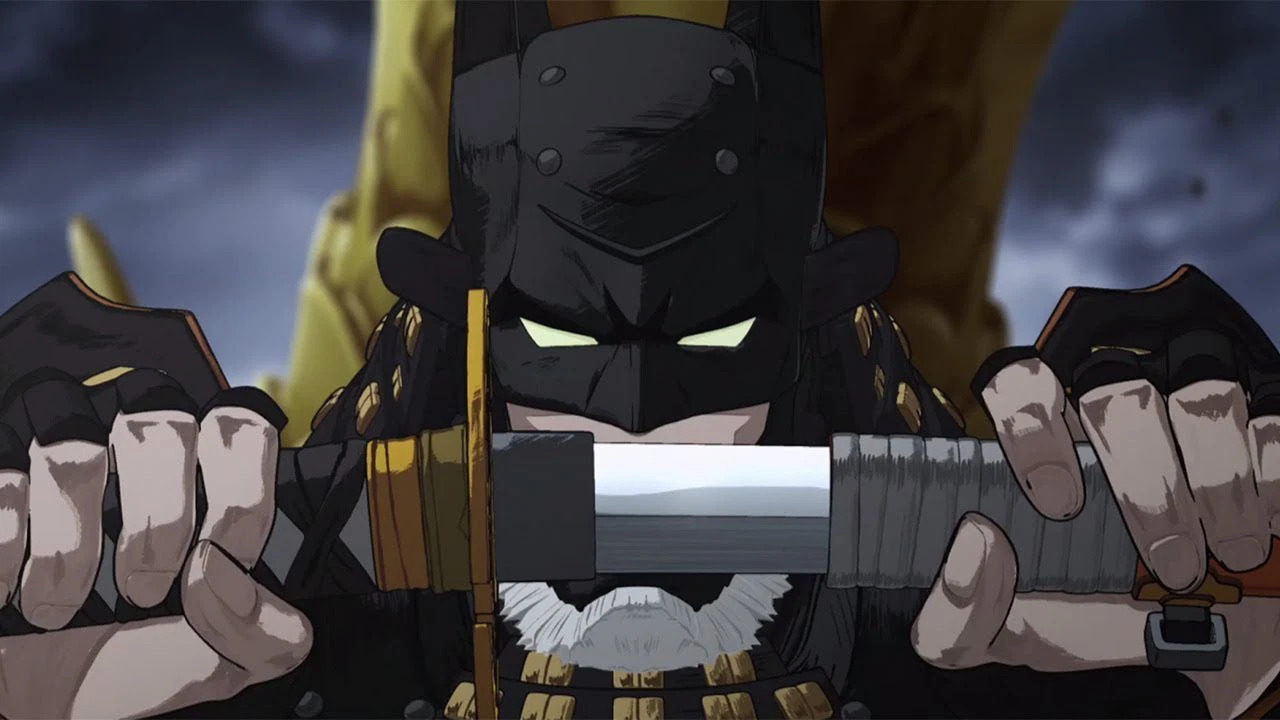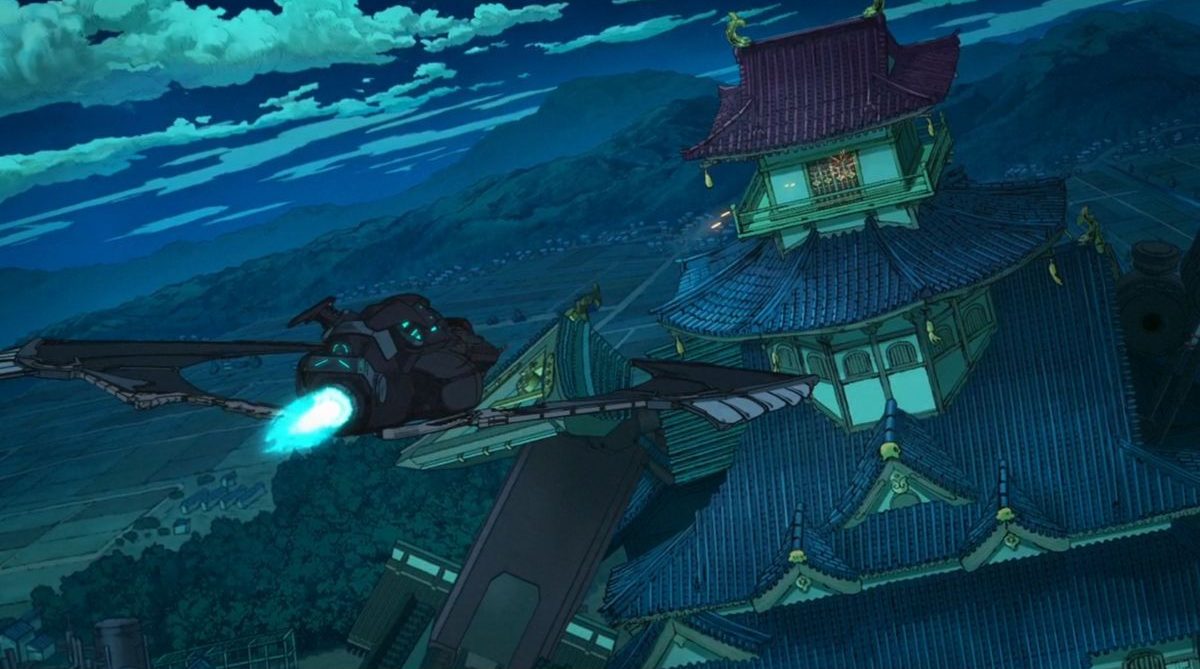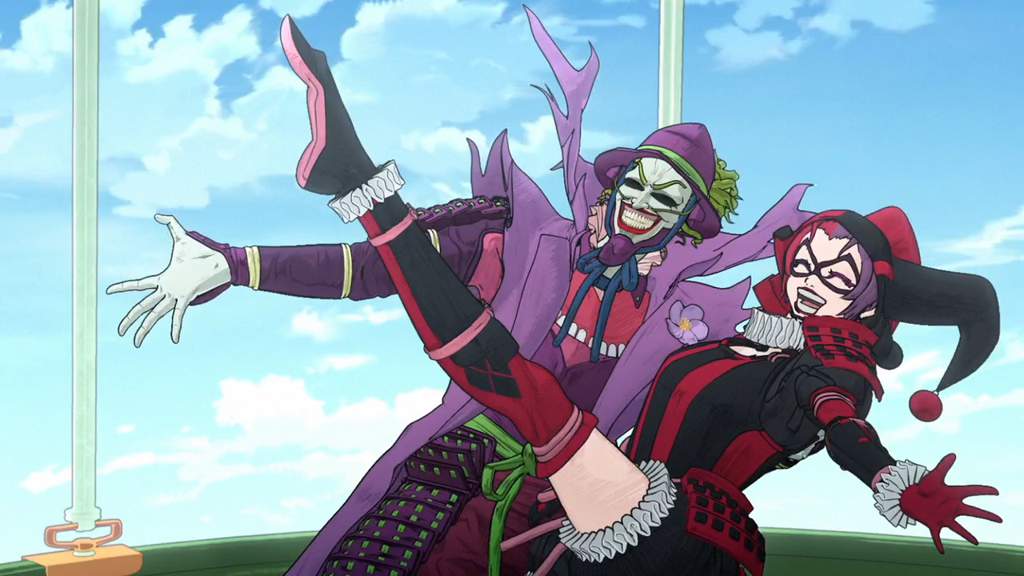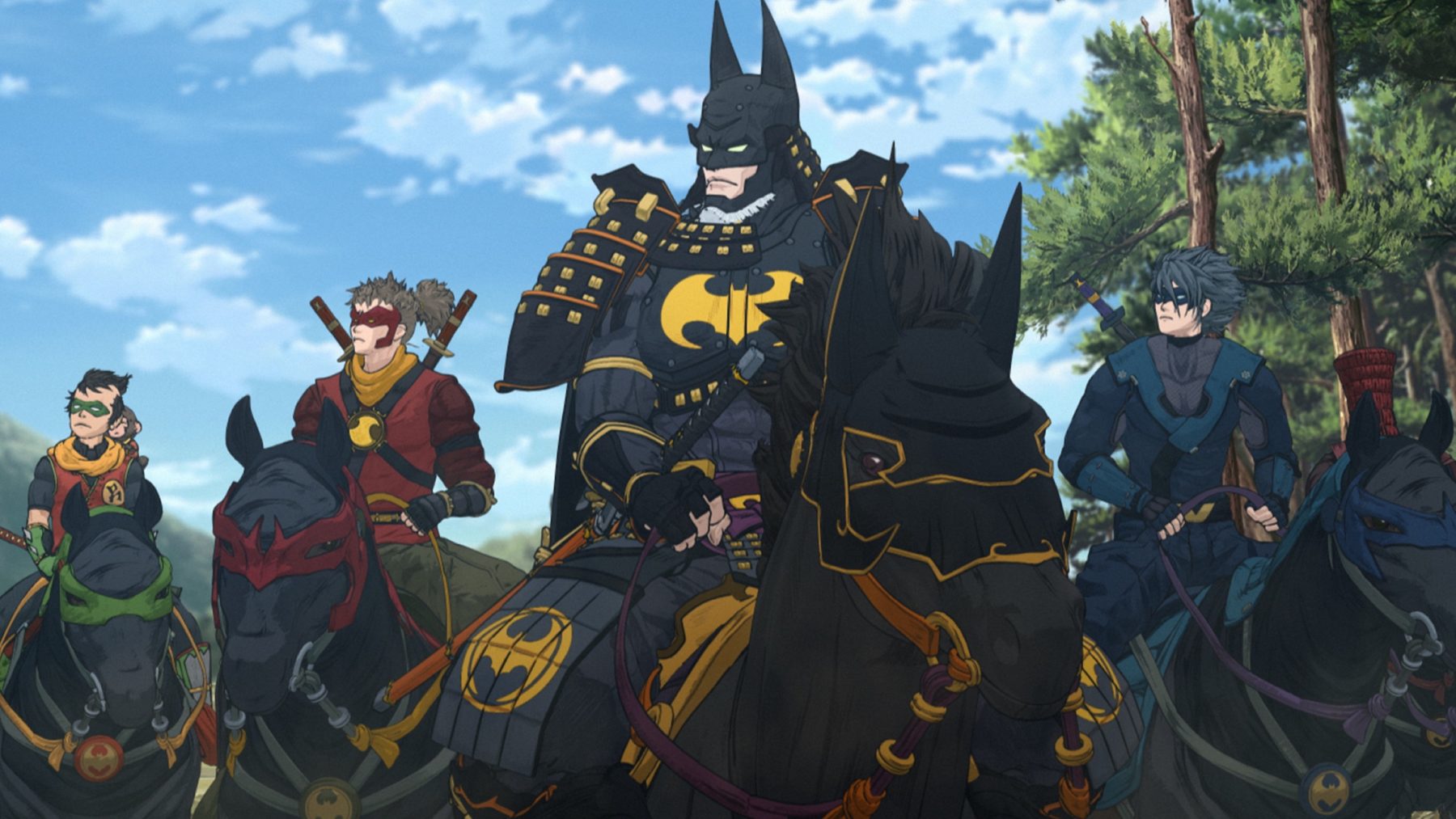Japan tends to bring out the best in Batman. When Japanese studios get a chance to put their own spin on the character, it can result in glorious spectacles that take full advantage of the medium of animation, like this year’s Suicide Squad Isekai or the 2008 anime anthology Batman: Gotham Knight. The effect is equally impressive when Western creators merely set a Batman story in Japan, like the “Night of the Ninja” and “Day of the Samurai” episodes of Batman: The Animated Series that explored Bruce Wayne’s martial arts past. But when a Japanese studio makes a Batman story take place in Japan, you get something greater than the sum of its parts. You get 2018’s Batman Ninja, an animated feature film about the Dark Knight and a faction of his rogues’ gallery being flung back in time to 16th-century Japan.

One of the most creative Batman films ever made, Batman Ninja doesn’t hinge entirely on a novel, skyscraper-less setting that renders the Bat grappling hook useless, though that scene is in the movie and it is pretty funny. It’s a film where director Junpei Mizusaki and screenwriter Kazuki Nakashima try to discover who the urban ninja is outside of an urban setting and without his high-tech gadgets. Japan of days past sure seems like the perfect place to do it and get to the heart of who and what Batman is, all while reminding audiences that the character isn’t Iron Man-lite with a Halloween theme. The end result is a film that expands the world of Batman much like the recently released anime Terminator Zero does to its own franchise by leaning into the elements that make a story set in Japan so unique.
In the 2018 movie, Batman gets caught in the temporal field of Gorilla Grodd’s time machine and wakes up in feudal Japan without access to his computer or satellite-based weapons. He still has his Batmobile, which he uses to attack Joker, who’s become a powerful warlord in the time since he and other villains landed in Japan two years before Batman’s arrival, because of plot convenience reasons. The Batmobile then gets destroyed when it turns out Joker had partially converted his castle into a giant robot in the grand tradition of Japan’s giant robot shows like Super Sentai (the basis for Power Rangers). Batman’s not down and out yet, though, as the crashed Batmobile transforms into a smaller Batwing, a Batcycle, and finally a power armor suit for fighting off Bane.
It’s only after all those vehicles are taken from him in a series of dark Looney Tunes-esque destruction does Batman truly despair, asking, “Who [is] Batman stripped of all his technology?” Fortunately, he gets over this when he eventually realizes that he still has his most important weapons: his body, mind, and spirit and the support of his family, as Nightwing, Red Hood, Red Robin, Robin, and Alfred have also been transported back in time. Together with a bat-themed ninja clan who foretold his arrival, Batman goes back to his analog roots, demonstrating that his true power is a will to fight and the help of his loved ones, the latter of which has sadly been too often overlooked in recent cinematic depictions of the Dark Knight. Batman isn’t a loner vigilante; he’s the gruff but nurturing head of a large extended family who puts his trust and life into other people’s hands daily. This is who Batman is under the hood, but Mizusaki and Nakashima don’t stop there. While getting to the core of the character, they also uncover some fascinating overlaps between his world and Japanese history.
Batman Ninja takes place in 16th-century Japan, when the biggest badass on the block was Oda Nobunaga, the lord of Owari Province who kickstarted the unification of the country during its warring states period. In the film, Joker takes Nobunaga’s place in history, as well as his castle, which one might think is just to be expected. Joker is Batman’s archnemesis, so, naturally, if Mr. J were to take over someone’s turf in feudal Japan, it’d be that of the most powerful warlord around. However, the Clown Prince of Crime filling in for Oda Nobunaga eerily makes a lot of sense when you compare the two, seeing as how the latter was known in his youth as “The Fool of Owari” who walked around in eye-assaulting attire like colorful pants made from tiger and leopard skin.
Young Nobunaga was also known for his cartoonish topknot, which his chronicler compared to a tea whisk, a hairstyle that is worn by Joker early on in the movie. To really hammer in the Joker-Nobunaga connection, Joker is also given the nickname of “The Demon King of the Sixth Heaven” (Dairokuten Mao) by his samurai vassals. This was the actual nickname of Oda Nobunaga, who went down in history as an especially cruel man due to, among many other things, slaughtering thousands of Buddhist monks, women, and children of the Enryaku-ji temple complex on Mount Hiei in 1571. Knowing that, it makes sense that Joker, being one of Gotham’s most proficient and twisted killers, would be the perfect supervillain stand-in for the historic figure. There’s even an extra Easter egg for fans of Japanese history in the form of Harley Quinn’s nickname, “Demon Page” (Makosho), since she and Joker are a couple in the movie and Nobunaga did have a sexual relationship with his page Mori Ranmaru.
Joker and Harley Quinn are far from the only Batman villains who get the Japanese historical treatment in Batman Ninja. Other temporarily displaced rogues are also connected to real-life samurai throughout the story, like Deathstroke, who was nicknamed the “One-Eyed Gun Masamune” (Dokuganju Masamune) in the film. Again, this makes sense. Deathstroke does only have one eye and, besides the katana, is also very proficient with firearms, which started to become commonplace on Japanese battlefields right around this time in history. But same as it is with Joker and Nobunaga, there is more to this pairing. The whole one-eye thing, the name “Masamune,” and Slade Wilson’s crescent-moon samurai helmet ornament are meant to draw parallels between Deathstroke and Date Masamune, the lord of northeastern Japan who is remembered as “the One-Eyed Dragon” (Dokuganryu). Like Deathstroke, he too couldn’t enjoy 3D movies, was also a big fan of firearms, and was known as a tactical genius. Honestly, the more you read about Date Masamune, the more you start to suspect that the comic book Deathstroke might’ve been secretly modeled on the notorious daimyo.
But by far one of the greatest historical Easter eggs in Batman Ninja is the mere inclusion of Gorilla Grodd, whose time machine brought Batman and his villains to Japan in the first place. Though he doesn’t get a nickname in the movie, it’s very interesting that, after Joker is toppled by Batman, it’s Grodd who takes his place as the most powerful warlord in Japan. It’s clever because Nobunaga’s successor, Toyotomi Hideyoshi, who was known as Japan’s second great unifier, was originally in Nobunaga’s service and was regularly taunted by his lord with the nickname “monkey.”
There are tons of other ways that Batman Ninja incorporates parallels between the character’s universe and 16th-century Japan. For example: It was also a stroke of genius to recreate Jason Todd’s Red Hood mask in the form of a tengai-gasa straw-basket hat, the kind that obscures the entire face and that was typically used by komuso wandering monks… or, as was sometimes the case, ninjas in disguise. An excellent choice for a movie called Batman Ninja.
The thing is, though, Batman originally had very little to do with ninjas or Japan. When Batman was created in the late 1930s, he was inspired by pulp characters like The Shadow and especially Zorro. His whole urban shinobi vibe only came much later. But as things stand right now, the worlds of Batman and Japan intersect in truly fascinating ways, creating opportunities for fresh and imaginative stories that few other superheroes can match. With Batman Ninja’s recently announced sequel, Batman Ninja vs. Yakuza League, expected to be released in the near future, now’s the perfect time to watch Batman Ninja. Hopefully the sequel will live up to the original!
Batman Ninja is available to rent on Amazon and Apple.
 Print
Print






